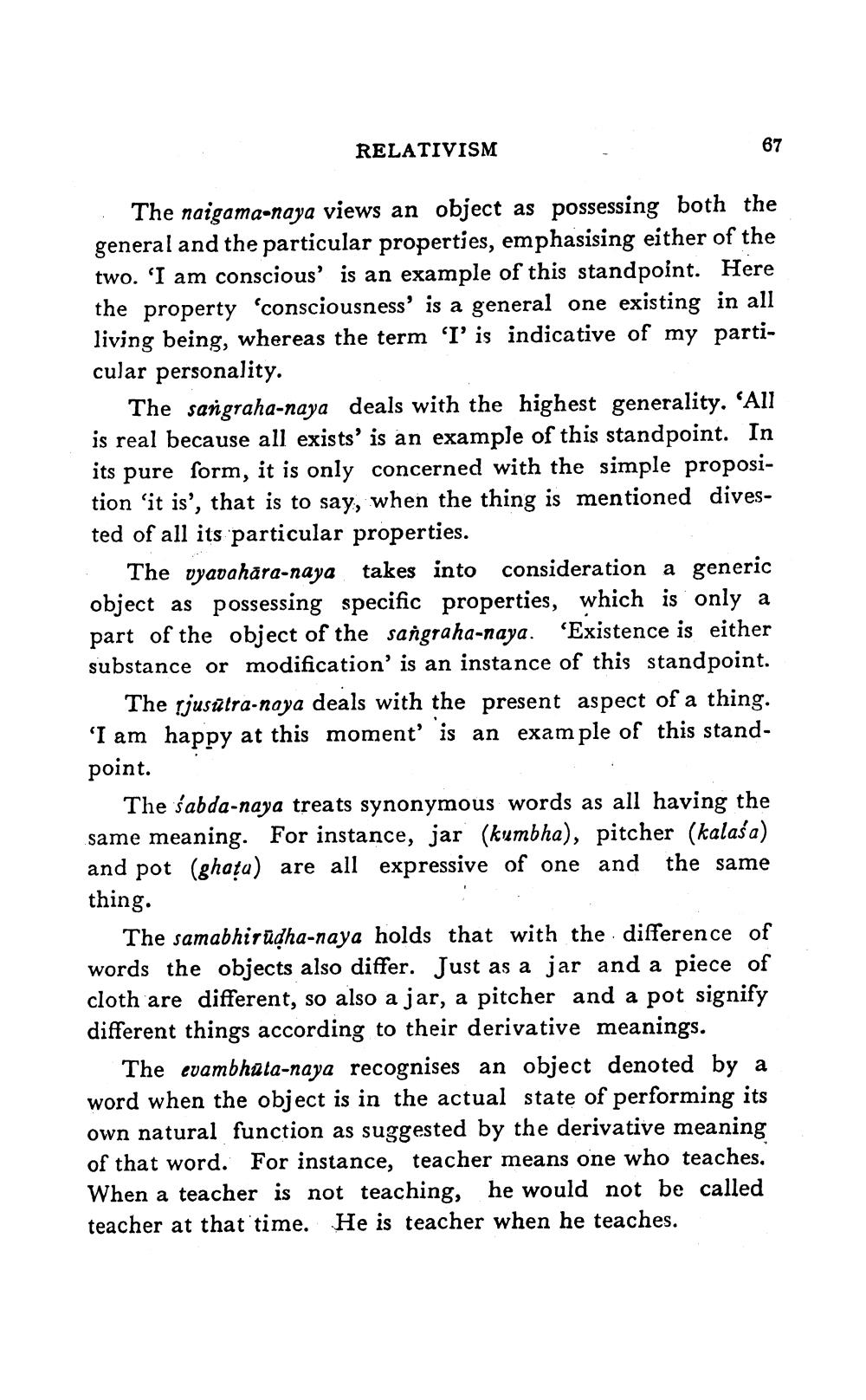________________
RELATIVISM
The naigama-naya views an object as possessing both the general and the particular properties, emphasising either of the two. 'I am conscious' is an example of this standpoint. Here the property consciousness' is a general one existing in all living being, whereas the term 'I' is indicative of my particular personality.
The sangraha-naya deals with the highest generality. ‘All is real because all exists' is an example of this standpoint. In its pure form, it is only concerned with the simple proposition ‘it is', that is to say, when the thing is mentioned divested of all its particular properties.
The vyavahāra-naya takes into consideration a generic object as possessing specific properties, which is only a part of the object of the sangraha-naya. 'Existence is either substance or modification' is an instance of this standpoint.
The rjusūtra-naya deals with the present aspect of a thing. 'I am happy at this moment is an example of this standpoint.
The sabda-naya treats synonymous words as all having the same meaning. For instance, jar (kumbha), pitcher (kalasa) and pot (ghața) are all expressive of one and the same
thing.
The samabhirudha-naya holds that with the difference of words the objects also differ. Just as a jar and a piece of cloth are different, so also a jar, a pitcher and a pot signify different things according to their derivative meanings.
The evambhuta-naya recognises an object denoted by a word when the object is in the actual state of performing its own natural function as suggested by the derivative meaning of that word. For instance, teacher means one who teaches. When a teacher is not teaching, he would not be called teacher at that time. He is teacher when he teaches.




